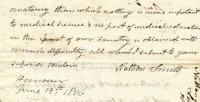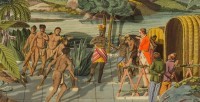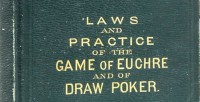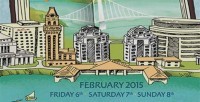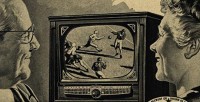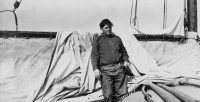“Nothing is more important to medical science & no part of medical education in this part of the country is obtained with so much difficulty” as the study of anatomy with the use of cadavers. So wrote Dr. Nathan Smith to New Hampshire Governor John Langdon in June 1806. One of the leading medical practitioners and educators of early 19th century America, Smith founded or helped establish four schools of medicine in New England, including those at Dartmouth, Yale, Bowdoin, and the University of Vermont. In the United States, cadavers for anatomy classes were difficult to come by – legally – until at least the 1830s. Anatomical dissection of the human body was viewed with deep suspicion, if not revulsion, especially in New England's clergy-dominated culture. In the early decades of the Republic, traffic in human remains remained largely an underground enterprise involving physicians and body snatchers (or “resurrectionists,” as they were known). Exceptions to the rule might be made, usually in the case of executed criminals whose bodies might be either sold by a creditor or released by the state – which provides the context of Smith's letter. The Nathan Smith letter, page 1 Several weeks before Smith wrote to the Governor, a New Hampshire man named Josiah Burnham had been sentenced to death for the brutal murders of two others. During his sixty-plus years of life, Burnham had worked variously as a whaler, a successful surveyor, and a landowner before becoming invo... [more The Doctor, the Murderer, and the Governor]
The Texas State Library has compiled a list of missing material, including early Texas Republic material and maps missing from its archives. A link to a PDF list of missing material may be found at the Texas State Library website here. This site also includes information on ownership markings and the text of state law on the right of recovery of Texas public records. [more Texas State Archives Missing Materials]
Exhibiting booksellers at the 48th annual California International Antiquarian Book Fair have announced some unusual and notable items that will be for sale at the fair (being held at the Marriott Oakland City Center, Oakland, CA from February 6 to 8, 2015). Some of these special items include: Overdue Bar Tab Invoice for Jimi Hendrix, 1969 “Even the world's greatest rock guitarist can forget to pay his tab once in a while. Hendrix spent a Halloween evening at “The Scene” nightclub in New York in 1969, and apparently, skipped out on his tab. The invoice for $44.25 is from owner Steve Paul stating that “The Scene needs the money badly. Your beverage tab is Past Due.” Hopefully he left a tip!” (Schubertiade Music & Arts LLC, Booth 106, $1,200) The First English Sex Manual from 1684 “Entitled Aristotle's Masterpiece, although not written by Aristotle or a masterpiece, this 17th century primer provides practical advice on copulation, conception, pregnancy and birth. Needless to say, this was an extremely popular book in its time, going through more than 100 editions over two centuries. While not intended as pornography, the graphic nature of the book caused it to be printed and sold “under the table.” One wonders how many teenaged English boys kept a copy hidden under their bed!” (Jeremy Norman HistoryofScience.com, Booth 809, $65,000) Aristotle's Masterpiece Courtesy Jeremy Norman HistoryofScience.com, Booth 809, $65,000 The Heritage Edition of the St. John's... [more CA Book Fair 2015: Featured Items]
In 1868 America you had to pay your bills in America just like you do now. If you were the tidy type, you might have this collapsible pocket bill organizer on your desk. This unusual survival —an expandable pocket bill organizer— was manufactured from gilt-stamped and lettered black cloth (closely matching book cloth seen on publisher's trade bindings for the period) and stiff cardstock. Commercially produced and patented in 1868, think of this as a Victorian office's pre-iPhone utility app. Simply constructed (without any design input from Sir Jonathan Ive), this item functioned as an expanding and collapsible document holder. Each of the bill holder's pockets are indexed for two letters of the alphabet. The index tabs are arranged in pairs. The final pocket, however, held all of those bills indexed for W, X, Y, and Z. (The dreaded bills from Messrs. Z.!) The vertical, top-loading format held bills, receipts, payment vouchers, miscellaneous documents, etc., all secure in each “pocket.” Two cloth bands at the bottom allowed the folder to hinge open while at the same time preventing the holder's contents from spilling out. Another elastic cloth band mounted at the top (not seen here) kept the folder securely closed. Perhaps, this secure closure was optimistically intended to delay bill payment as long as possible. The self-proclaimed Expansive Pocket Bill Holder is gilt-stamped “Novbr. 1868.” The annual report U. S. Commissioner of Patents for 1868¹ notes a patent... [more Paying Your Bills in 1868 America – Expansively]
The ABAA's ever-steady Benevolent Committee, under the auspices of yours truly, will be roaming the aisles at the Oakland Book Fair this coming February 6th-8th, encouraging all to reach deep and channel their inner Carnegies (Andrew, not Dale). As there have been a few last-minute changes, I wanted to take this opportunity to update our readers on the opportunities we'll be providing to contribute to the Benevolent and Woodburn Funds throughout the weekend. First of all, I'll note with sadness that our annual Benefit Poker Tournament, which was a huge success in 2014 and which had been scheduled to take place Thursday night following the Exhibitors' Reception, has been cancelled. It was red tape, not a lack of enthusiasm, that doomed the tournament for this year, and I can promise all you high-rollers that we'll be dealing cards again in Pasadena in 2016. In the meanwhile, I hope all who planned on participating will consider donating their entry fees to the Woodburn Fund, which provides bookseller scholarships to the Rare Book School and the Colorado Antiquarian Book Seminar. Having been personally involved with each of these entities — very personally involved, in the case of CABS — I can attest to the excellent work they do providing continuing education to both novice and experienced members of the antiquarian book trade. One look at the list of ABAA members admitted over the past five years, many of whom have been direct recipients of Woodburn scholarships and many ... [more Tournament Folds, But Giving Still in the Cards]
I've always enjoyed the international nature of the book trade. Buying books from all over the world, and selling them to collectors all over world: what could be better than that? Livres sans frontières. The coming month will see me do just that. This week, I shall be in Stuttgart for the 54th Stuttgarter Antiquariatsmesse. Then, two weeks later, I travel to Oakland for the 48th California International Antiquarian Book Fair. Both fairs will see lots of British booksellers in attendance, whether 'shopping' or as exhibitors. There's always a certain buzz about Stuttgart: the first major fair of the New Year, everyone keen to get hunting to see what they can find. I can remember going to my first Stuttgart fair, back in 1999. In those days, you still had the 'running.' For those who never experienced it, I shall explain. At German book fairs, there is usually a general fair catalogue, which lists details of certain books the various booksellers will be exhibiting at the fair. Importantly, these books must be available when the fair opens: exhibitors are not allowed to sell anything listed in the fair catalogue before the fair. That used to mean that if you really wanted something listed in the fair catalogue, you had to run for it when the fair opened. People would employ young, athletic types (often local students) to run for books. Or you could run yourself. You had to get there early, of course, perhaps an hour before the fair was due to open, to make sure of your place in... [more On Your Marks, Get Set…]
We are just weeks away from the 48th California International Antiquarian Book Fair (February 6-8, 2015), the world's great Northern California rare book fair, and organizers have an extensive schedule of special events and seminars to surprise and delight both experienced collectors and those curious to begin. This year, the festival moves to a new location in historic Oakland, CA, affording easy access and superb facilities at the Oakland Marriott City Center. Along with exhibits by over 185 rare book dealers from the U.S. and abroad, there are many special events planned: Lecture by Daniel De Simone Saturday, February 7 at 1pm The ABAA and the Bibliographical Society of America are sponsoring a lecture on “Building New Audiences for Rare Books” by Daniel De Simone, Eric Weinmann Librarian at the Folger Shakespeare Museum. Educational Events for New Book Collectors Sunday, February 8 11:30am: Book Collecting 101 Learn how to judge a book's condition, where to buy quality rare books, the characteristics that distinguish a true first edition, how to shape a collection, and much more. 12:15 pm: What's This Book Worth? Professional appraisers will discuss the factors that give books commercial and monetary value. 1pm: Discovery Day Exhibitors will offer interested attendees up to three free appraisals, so if you think you may have an item of special interest, this is a valuable opportunity to have it assessed. "Jack London, Photographer": A Lecture by Sara S. Hodson Sunday,... [more 48th Annual California Antiquarian Book Fair]
We may be in the age of smart phones, tablet computers, and e-readers, but in sheer numbers, one household device still rules: television. Today in the United States, there are 2.86 TVs for every 2.5 people. More than half of U.S. households have three TVs. Yet the story of how television became ubiquitous in the American landscape remains mostly fragmented. There are several intertwining threads, including the narrative of technological development at individual manufacturers (especially RCA in the US), the development of appealing programming and a wide viewership, and the emergence of key institutions of contemporary market culture, notably mass advertising. Books and articles have been devoted to each of these, and there are a handful of institutions with excellent websites that provide further insight and documentation. (See here, here and here.) But an adequate history of the rise of television, and the consumer electronics industry itself, requires a comprehensive work of synthesis that so far has proved elusive. TV is a major component of the twentieth century American experience, shaping and reflecting both our own self-understanding, and the understanding of America around the globe. Surprising then that there seems to be relatively little collecting interest for printed materials from the years of television's incubation and infancy. In part this may be due to the technical nature of the story during the 1920s and '30s, in which improvements in electronic image cap... [more Collecting the History of Early Television]
Lost in transit: A signed Abraham Lincoln document appointing Christian Frederick Moller assistant Danish Consul in 1864. The document was framed and matted with portraits. See a rough image of the item here: http://www.bibliophagist.com/gscott/images/items/LincolnMoller.jpg Island Movers in Hawaii packed the item in its own custom wooden crate. One of the owners of the document saw the item packed. The crate was shipped from Hawaii on Oct. 10, 2014 (as part of a larger shipment of other household effects) to Northern California. The crate with the Lincoln document has not arrived, though the balance of the shipment arrived safely on December 12, 2014. If you are offered this piece or hear any information about the item, please contact Steve Gilley at (808) 497-7402. You can also contact Detective Andre Peters of the Honolulu Police Department Theft Detail at (808) 723-8902 (7:00 AM-3:45 PM HAST); refer to case 15002083. [more Missing in Transit: Abraham Lincoln Signed Document]
The 48th California International Antiquarian Book Fair kicks off on February 6, 2015. One of the keynote events at the fair is a presentation on Jack London's photography, by archivist and noted London expert Sara S. Hodson. Jack London (1876-1916) is now best known for stories and novels like The Call of the Wild and The Sea Wolf, as well as his many adventures as a sailor, Klondike gold-seeker, and rancher, but in the early years of the 20th century, he was a noted journalist and photographer, reporting from around the world for the Hearst syndicate. His negatives are now housed with the California Department of Parks and Recreation, and the Huntington Library holds 12,000 printed photographs. (ABAA members occasionally offer some of his photographs.) London's vivid, sensitive photographs capture the homeless of Great Britain in 1902, recording scenes of ragged men and women huddled on the park benches and harassed by police; battle images and portraits of freezing Korean refugees during the 1904 Russo-Japanese War; some of the first photos of the 1906 San Francisco Earthquake; the colorful life of the Hawaiian Islands and the South Seas photographed on the voyage of his sailboat, the Snark (1911); and the invasion of Vera Cruz in 1914. Wounded Japanese Soldier, Russo-Japanese War, 1904 Many of these images appeared in his newspaper and magazine stories as well as in his books The People of the Abyss (1903) and The Cruise of the Snark (1911), but few have been seen by many... [more Jack London, Photographer]


